At Coho AI, we understand that modern SaaS companies face the challenge of making data-driven decisions from a vast array of data, platforms, and analyses, making it hard to pinpoint the best courses of action. https://www.coho.ai/
Don't wanna be here? Send us removal request.
Text
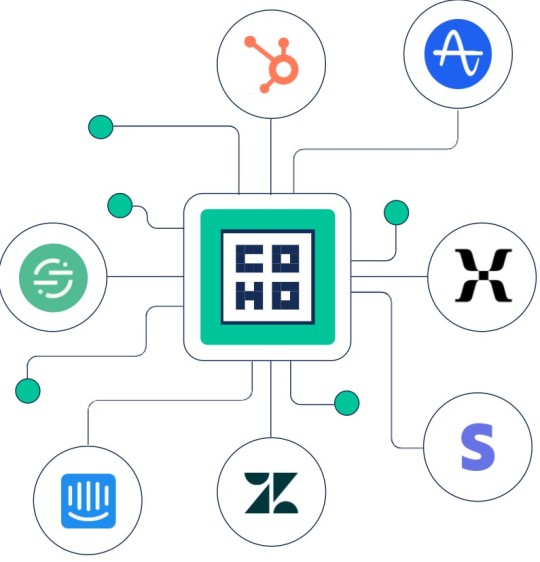
Customer Retention Management System | Coho AI
Enhance your business with Coho AI's Customer Retention Management System. Our innovative platform leverages AI-driven insights to boost customer loyalty, reduce churn, and maximize lifetime value, ensuring sustainable growth and long-term success. https://www.coho.ai/
0 notes
Text
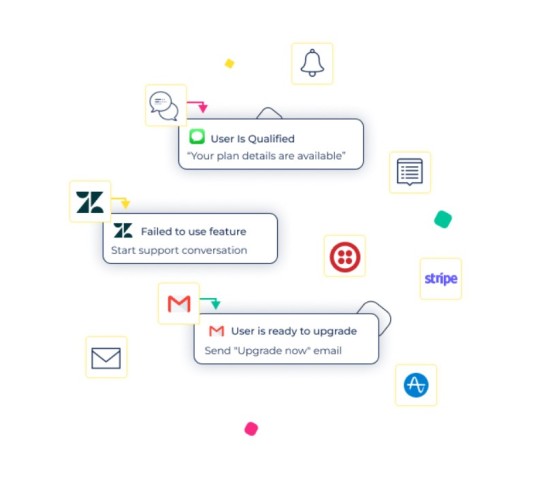
Create omnichannel engagements - Coho AI
Deliver a cohesive user experience across all touchpoints, from mobile and web to in-app and SMS. Meet users where they are, ensuring a consistent and personalized interaction at every step of the journey. https://www.coho.ai/product/personalized-journeys/
#customer retention rate calculator#customer retention management system#customer retention and loyalty#customer success playbook templates#customer success playbooks#customer journey mapping tools#b2c product led growth#product activation rate
0 notes
Text
Micro Segmentation Marketing - Coho Ai
What are the four micro-segmentation variables?
The Four Micro-Segmentation Variables
Micro-segmentation is a more advanced form of segmentation that groups small numbers of customers into extremely precise segments based on various factors. The four key micro-segmentation variables are:
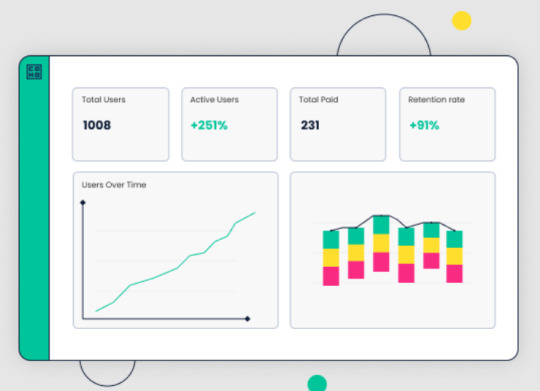
Demographic Segmentation: This involves dividing the market based on demographic factors such as age, gender, income, education, and family size. Demographic segmentation helps in understanding who the customers are, enabling marketers to create messages that resonate with different demographic groups.
Psychographic Segmentation: Psychographic segmentation focuses on dividing the market based on psychological and lifestyle characteristics. It takes into account factors such as personality traits, values, interests, attitudes, and opinions. Psychographic segmentation helps in understanding the motivations and preferences of customers, allowing marketers to tailor their messaging and offerings accordingly.
Behavioral Segmentation: Behavioral segmentation divides the market based on customer behavior, including their purchasing patterns, usage habits, brand loyalty, and response to marketing stimuli. By analyzing customer behavior, marketers can identify different segments and develop targeted marketing strategies to effectively engage and retain customers.
Geographic Segmentation: Geographic segmentation involves dividing the market based on geographic factors such as location, climate, population density, and cultural preferences. This type of segmentation helps in understanding the specific needs and preferences of customers in different regions, allowing marketers to customize their offerings and marketing messages accordingly.
These four micro-segmentation variables provide marketers with a more detailed understanding of their customers, enabling them to create personalized marketing strategies that maximize the effectiveness of their interactions with each customer segment.
#behavioral targeting#conversion rate optimization#automated customer interactions#conversion rate optimization strategies#consumer market segmentation#ai powered digital marketing#b2c marketing automation platforms#behavioral targeting technology
0 notes
Text

The Blueprint for Engagement - Coho AI
At the core of personalization lies a comprehensive understanding of user behaviors and preferences. Leveraging advanced analytics to dissect and segment user data is the first step towards meaningful engagement. This process illuminates diverse user pathways and interests, enabling developers to craft experiences that resonate on a personal level. https://www.coho.ai/blog/in-app-engagement/
#behavioral targeting technolog79#conversion rate optimisation strategy#improve customer retention#ai powered digital marketing#conversion rate optimization strategies#mobile app engagement
0 notes
Text

Micro-Moments Unfolded: How Brands Ride the Spontaneity Wave - Coho AI
Micro-moments emerge when consumers reflexively turn to a device, predominantly a smartphone, as a response to an instantaneous need or curiosity. They aren’t just confined to purchasing decisions. They encapsulate a spectrum of actions: “I want to know,” where a user might be looking up a fact or information; “I want to buy,” which can lead them down a purchasing rabbit hole; “I want to go,” guiding them to seek out locations or experiences; or even “I want to do,” pushing them to explore a new activity or hobby. These moments are fleeting but potent, representing pivotal junctures in the decision-making process. https://www.coho.ai/blog/micro-moments/
#conversion rate optimisation strategy#behavioral targeting technology#best b2c crm solution#micro segmentation marketing#segmentation tool#customer retention management software
0 notes
Text
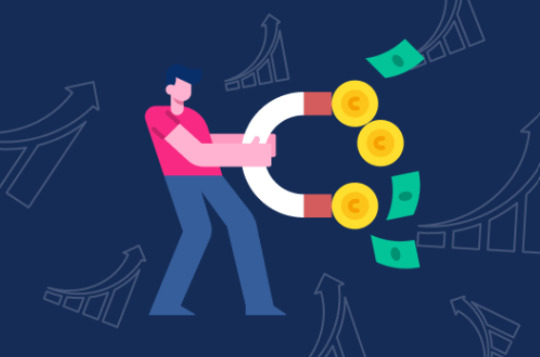
Net Retention Rate - Coho AI
Net Retention Rate (NRR) is a key metric for any B2B software as a service (SaaS) company, but it becomes particularly important in times of economic recession. NRR measures the percentage of a company’s existing customers that continue to use and pay for its services from one period to the next. https://www.coho.ai/blog/maximizing-b2b-saas-revenue-with-nrr-why-it-matters-and-how-to-do-it/
#product adoption#net retention revenue#ai-driven customer engagement#behavioral targeting#conversion rate optimization#ai for b2c marketing#automated customer interactions#conversion rate optimization strategies#ai powered digital marketing
0 notes
Text

Customer Retention Management Software - Coho AI
Customer Retention Management Software (CRMS) is a pivotal tool for businesses aiming to fortify their relationships with existing customers and enhance long-term loyalty. With its comprehensive suite of features, CRMS empowers organizations to analyze, strategize, and execute initiatives geared towards retaining customers and maximizing lifetime value. https://www.coho.ai/
0 notes
Text
Crafting an Effective Customer Success Playbook: Templates and Strategies

In today's competitive landscape, businesses recognize the critical importance of customer success in driving sustainable growth and fostering long-term relationships. A well-defined Customer Success Playbook serves as a roadmap for ensuring customers derive maximum value from products or services. This content delves into the significance of Customer Success Playbooks and provides templates and strategies to create comprehensive guides tailored to your organization's needs.
Understanding the Customer Success Playbook: A Customer Success Playbook serves as a comprehensive guide outlining the strategies, processes, and best practices necessary to drive customer success throughout the lifecycle. It provides a structured approach for customer success teams to understand customer needs, mitigate challenges, and maximize satisfaction and retention.
Key Components of a Customer Success Playbook:
Customer Segmentation and Profiles: Identify and categorize customers based on their needs, goals, and characteristics to personalize engagement strategies. Onboarding Procedures: Define clear onboarding processes to ensure seamless transitions for new customers, setting the stage for successful long-term relationships. Success Milestones and KPIs: Establish measurable success criteria and key performance indicators (KPIs) to track progress and demonstrate value delivery to customers. Proactive Engagement Strategies: Outline proactive communication and engagement strategies to anticipate customer needs, address issues promptly, and foster proactive relationships. Renewal and Expansion Strategies: Develop strategies for renewal and expansion opportunities by identifying upsell/cross-sell opportunities and nurturing customer advocacy.
Templates and Strategies for Crafting a Customer Success Playbook:
Customer Persona Template: Create detailed customer personas highlighting demographics, pain points, goals, and preferred communication channels to tailor strategies effectively. Lifecycle Stage Workflow Template: Map out customer journey stages from onboarding to renewal/expansion, outlining specific actions and touchpoints at each stage. Success Plan Template: Develop individualized success plans for each customer, delineating goals, timelines, responsibilities, and success metrics. Communication Cadence Template: Define a communication cadence outlining frequency, channels, and content types for proactive engagement throughout the customer lifecycle. Risk Mitigation Plan Template: Identify potential risks and challenges that may impact customer success, and outline proactive mitigation strategies to address them effectively.
Implementation and Iteration:
Once crafted, the Customer Success Playbook should be communicated and integrated across relevant teams within the organization. Continuous evaluation and refinement based on customer feedback, evolving needs, and market dynamics are crucial for maintaining its effectiveness.
Conclusion: A well-crafted Customer Success Playbook serves as a foundational tool for driving customer-centricity, fostering long-term relationships, and driving business growth. By leveraging templates and strategies outlined herein, organizations can develop comprehensive playbooks tailored to their unique customer needs, ultimately enhancing customer satisfaction, retention, and advocacy.
#customer retention and loyalty#customer journey mapping tools#customer journey analysis#customer retention software
0 notes
Text

Customer Retention Management Software | Coho AI
Boost customer loyalty effortlessly with Customer Retention Management Software. Analyze, engage, and retain customers for sustained business success. https://www.coho.ai/
0 notes
Text
Product Qualified Lead - Coho Ai
What is a product qualified lead?
A Product Qualified Lead (PQL) is a prospective customer who has not only shown interest in your product but has also engaged with it in a way that indicates a higher likelihood of becoming a paying customer. Unlike Marketing Qualified Leads (MQLs) that show interest but might not have interacted deeply with the product, PQLs demonstrate a level of product engagement that signals potential readiness to convert.

How do you identify product qualified leads?
Identifying product qualified leads (PQLs) involves assessing whether a lead has engaged with your product in a way that indicates potential for conversion. Here are some common methods to identify PQLs:
Product Interaction: Monitor how leads interact with your product. Have they used key features or performed actions that indicate a deeper interest or intent to solve a specific problem?
Usage Metrics: Analyze usage metrics like frequency of logins, time spent on certain features, or specific actions taken within the product. Consistent and meaningful usage can signal a higher likelihood of conversion.
Scoring Models: Develop scoring models that assign points based on actions taken, such as signing up for a trial, completing onboarding steps, or reaching certain usage thresholds. These scores help prioritize leads.
Behavioral Triggers: Set up triggers based on specific behaviors that often precede conversion. For instance, if a lead starts a trial, uses a feature extensively, or adds team members, it might indicate readiness to purchase.
Customer Surveys/Feedback: Gather feedback from users. If a lead provides positive feedback or indicates specific pain points your product solves, they might be more likely to convert.
Segmentation: Divide leads into segments based on their behavior, interests, or demographics. Tailor your approach to each segment, focusing more on those that exhibit behaviors aligned with a PQL.
Sales Team Feedback: Leverage insights from your sales team. They interact directly with leads and can provide valuable feedback on which leads are showing genuine interest or are more likely to convert.
Lead Scoring Automation: Utilize automation tools that track user behavior and assign scores accordingly. This helps in real-time identification of potential PQLs.
By combining these methods and continuously refining your criteria based on successful conversions, you can effectively identify product qualified leads and optimize your conversion process.
#product activation rate optimization#nrr growth#plg flywheel#saas revenue#revenue retention#gross revenue retention#revenue machine#product success metrics#plg tech stack
0 notes
Text
Product Led Growth Framework - Coho Ai
What are the frameworks for product led growth?
Product-led growth (PLG) is a strategy where the product itself serves as the main vehicle for customer acquisition, conversion, and retention. Several frameworks and methodologies can be applied to facilitate product-led growth. Here are some key ones:
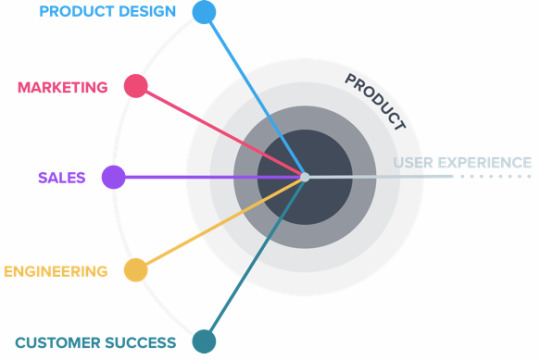
RICE Framework:
Reach: How many users will be affected by a particular project? Impact: What impact will the project have on users or the business? Confidence: How confident are you in your estimates? Effort: How much effort will the project require to implement?
North Star Metric:
Identifies the one metric that best captures the core value a product delivers to customers. It aligns the team and focuses efforts on delivering the most value to users.
OKR (Objectives and Key Results):
Objectives: Clear, qualitative goals that are ambitious, inspirational, and time-bound. Key Results: Specific, measurable, and verifiable metrics indicating progress toward objectives.
HEART Framework (Google):
Happiness: User satisfaction, often measured through surveys or Net Promoter Score (NPS). Engagement: The level of user involvement with the product, including metrics like active users and session duration. Adoption: The rate at which new users are adopting key features or functionalities. Retention: The rate at which existing users are returning to the product. Task Success: How well users can complete tasks within the product.
Jobs to be Done (JTBD):
Focuses on understanding the underlying motivations of users. People "hire" products to get jobs done in their lives, and understanding these jobs can lead to product improvements.
User Onboarding Frameworks:
Effective user onboarding is crucial for PLG. Frameworks like the Aha! Moment, User Activation Framework, and User Onboarding Tear Down provide structured approaches to optimizing user onboarding processes.
Product-Qualified Leads (PQL):
Identifies leads who have experienced value within the product, using product usage data to qualify potential customers.
Viral Loop Framework:
Encourages existing users to invite new users, creating a viral growth effect. This is often achieved through referral programs and social sharing features.
Freemium Model:
Offers a basic version of the product for free with the option to upgrade to a premium version with advanced features. This allows users to experience the product before committing to a purchase.
Growth Loops:
Focuses on creating loops where the product's usage leads to more users, creating a self-sustaining cycle of growth. Viral loops, engagement loops, and paid loops are common types.
Implementing a product-led growth strategy often involves a combination of these frameworks, tailored to the specific product, target audience, and business goals. Companies iterate and refine their approach based on continuous feedback and data analysis to drive sustainable growth.
#product activation rate#product activation#product qualified lead#pql-driven revenue growth#pql to revenue ratio#pql scoring system#pql sales readiness
0 notes
Text
Product-led Sales Funnel in Tel Aviv - Coho Ai
What is product-led sales?
Product-led sales is a sales approach and strategy that places the product itself at the forefront of the sales process. In a product-led sales model, the product or service is designed and marketed in a way that it can sell itself to a significant extent. This approach is particularly common in industries with digital products, software as a service (SaaS), and other technology-driven offerings. Here are some key characteristics and principles of product-led sales:
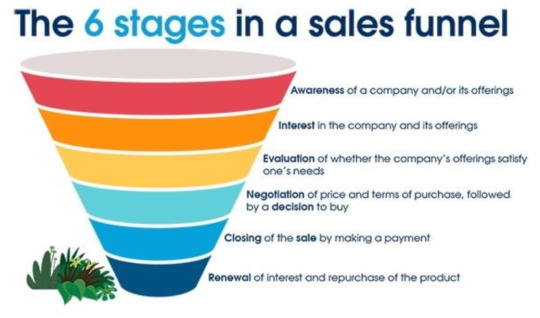
Self-Service: The product is designed to be easy for customers to discover, try, and use without extensive assistance from a sales team. Customers can often sign up, explore, and even start using the product on their own.
Free or Freemium Models: Many product-led companies offer a free trial or freemium version of their product. This allows potential customers to experience the value of the product before making a purchasing decision.
Viral Growth: Product-led companies often rely on word-of-mouth marketing and viral growth to acquire new customers. Satisfied users can become advocates and refer others to the product.
Customer-Centric: The focus is on delivering a great customer experience. User feedback is valued, and product improvements are often driven by customer needs and requests.
Low-Touch Sales: Sales teams play a more supportive role, assisting customers when needed but not driving the sales process. They may provide information, answer questions, and help with onboarding.
Data-Driven: Product-led companies rely heavily on data analytics to understand user behavior, track key metrics, and optimize the product and sales funnel.
Upselling and Expansion: Once customers are using the product, the company may employ upselling and cross-selling strategies to encourage users to upgrade to paid plans or purchase additional features.
Scalability: Product-led sales can be highly scalable, as the product is often the primary driver of customer acquisition and retention.
Examples of companies that have successfully implemented a product-led sales approach include Dropbox, Slack, Zoom, and many other SaaS companies. These companies offer free trials or freemium versions of their products, making it easy for users to get started and experience the value of the product before committing to a purchase.
It's important to note that while product-led sales can be effective, it may not be suitable for all types of products or industries. The success of this approach often depends on factors such as the nature of the product, the target market, and the competitive landscape.
#customer journey ai#customer journey strategy#optimize customer journey#customer journey optimization#plg customer journey#customer health score#predictive lead scoring machine learning#product led onboarding#metrics for free trial#revenue optimization strategies
0 notes
Text
Revenue Optimization Strategies

Dynamic Pricing Strategies: Revenue optimization involves employing dynamic pricing methods that adjust prices based on real-time demand, supply, and market conditions. By utilizing data-driven insights, businesses can optimize pricing to capture maximum value during peak demand periods and stimulate demand during off-peak times. This approach ensures that prices align with customers' perceived value while maximizing revenue potential.
Cross-Selling and Upselling Initiatives: Effective revenue optimization also entails implementing cross-selling and upselling techniques. By offering complementary products or services to existing customers, businesses can increase the average transaction value and enhance overall revenue. Tailored recommendations and bundled offerings capitalize on customers' preferences, fostering increased spending and loyalty.
Personalized Marketing Campaigns: Crafting personalized marketing campaigns based on customer behavior, preferences, and purchasing history is another essential revenue optimization strategy. By delivering relevant content, offers, and promotions, businesses can drive higher conversion rates and customer engagement. Personalization enhances the customer experience, cultivating lasting relationships and boosting customer lifetime value, subsequently contributing to revenue growth.
0 notes
Text
Unlock Your Sales Potential With AI-Powered Insights - Coho AI

When it comes to optimizing business strategies, one of the most effective approaches is to prioritize high-potential prospects, and AI-powered tools have proven to be invaluable in this endeavor. With the ability to analyze vast amounts of data quickly and accurately,
AI systems can identify individuals or companies that are more likely to convert into valuable customers or clients. By leveraging machine learning algorithms, these AI-powered tools can detect patterns, behaviors, and preferences that may indicate a higher likelihood of engagement and conversion.
This enables businesses to focus their resources, efforts, and marketing campaigns on the most promising prospects, increasing the efficiency and effectiveness of their sales and marketing initiatives. By harnessing the power of AI to prioritize high-potential prospects, organizations can enhance their customer acquisition strategies, maximize their return on investment, and ultimately drive business growth.
For more information: https://www.coho.ai/
1 note
·
View note